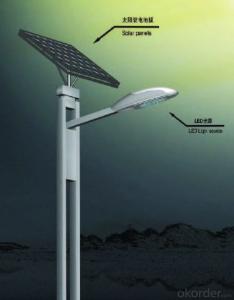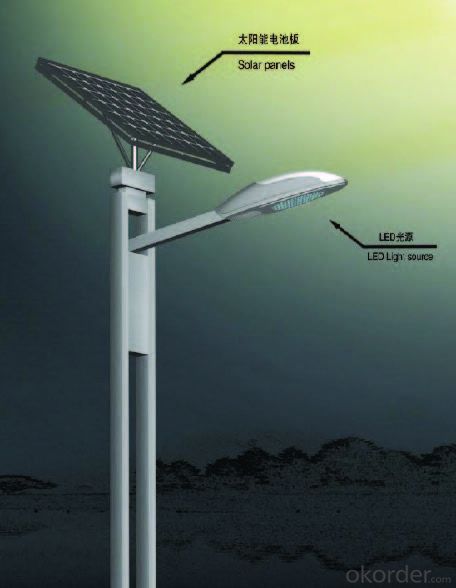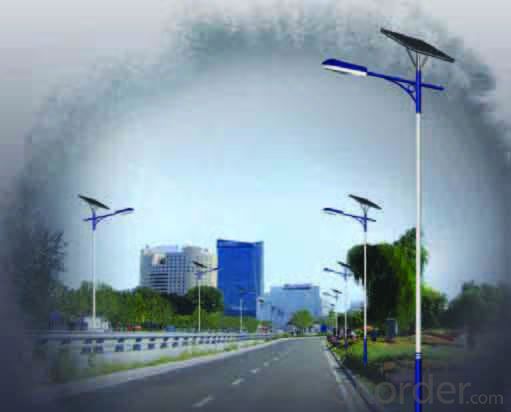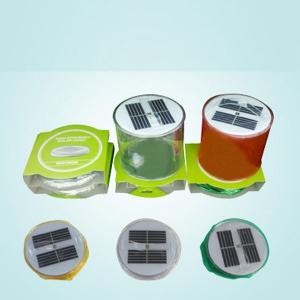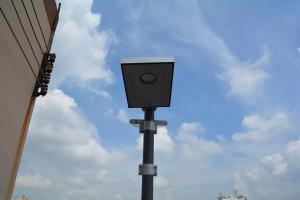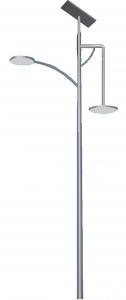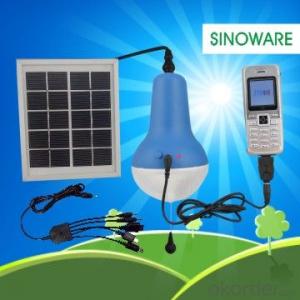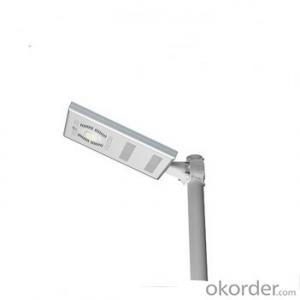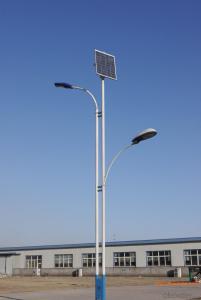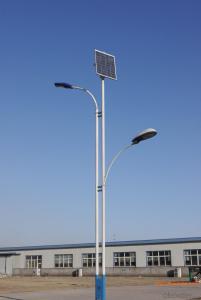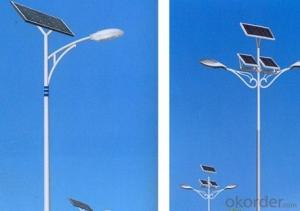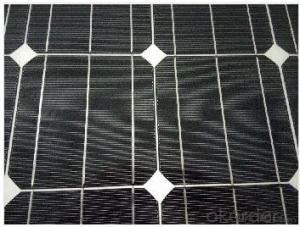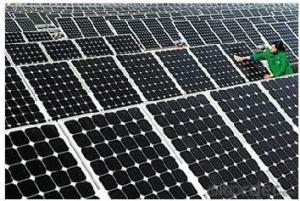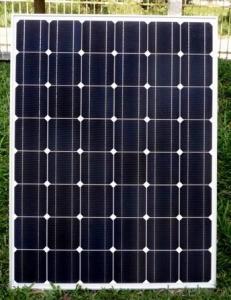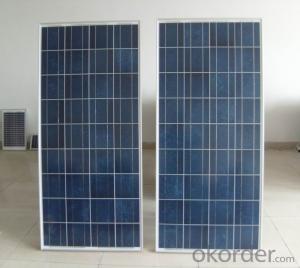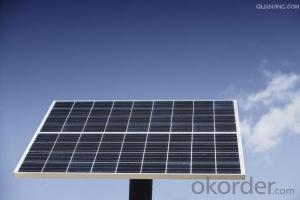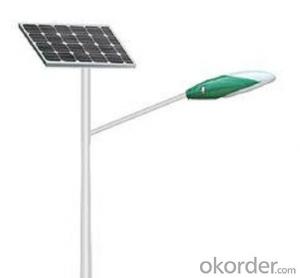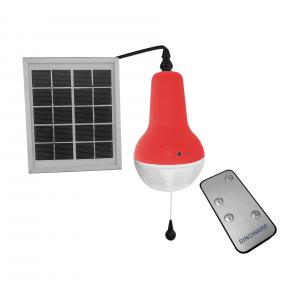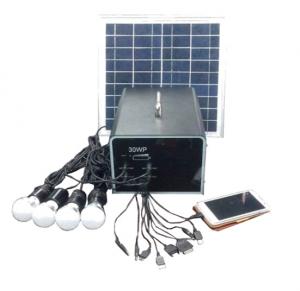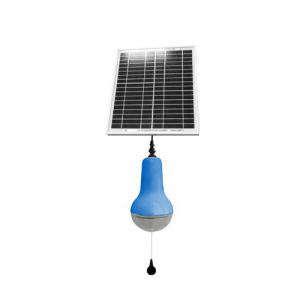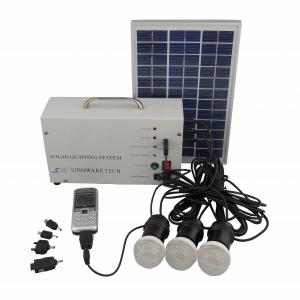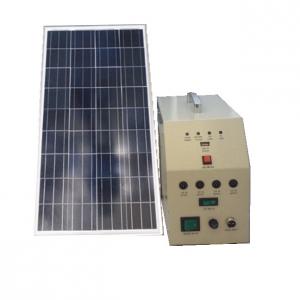CNBM Solar Light Pillars - All in One & Separate
- Loading Port:
- China main port
- Payment Terms:
- TT OR LC
- Min Order Qty:
- 1 set
- Supply Capability:
- 10000000 set/month
OKorder Service Pledge
OKorder Financial Service
You Might Also Like
Working Principle of solar street light
The solar energy is converted into electricity which is stored in the battery through the solar
panel during the day time. The solar panel voltage will decrease gradually with the reduction of
solar radiation. When the solar panel voltage is lower than stipulated voltage, the battery will
supply electricity to load automatically through the controller; When the dawn comes, the solar
panel voltage increase gradually. After the voltage is larger than stipulated voltage, the
controller will cut off the electricity from battery and switch the energy supply to solar panel.
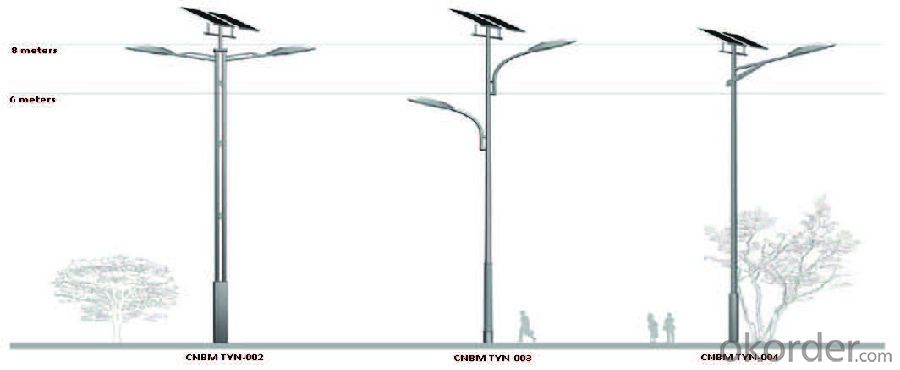
Structural feature
1. Shell casted by 1800T die‐casting machine, featuring high strength and compact structure
2. Reflector is made of high purity aluminum plate extension‐formed
3. Top‐lift‐cover for easy repair and maintenance
4. Internal bulb‐replacement structure for excellent water and dust‐proof property
5. Highly‐transparent toughened glass shade
Technical parameters
1. Protection rating: IP65
2. Shell anti‐corrosion property: Class 1
3. Operating temperature: ‐35℃~+45℃
4. Electric shock‐proof rating: Class 1
5. Power source: 24V(±10%)/50Hz
6. Lamp: 20w‐180w LED
advance of Solar Led Street Light:
LED is the fourth generation of light source after incandescent lamp, fluorescent lamp and HID. Compared with
traditional light source, LED light source has following advantages
High lighting efficiency.
Incandescent lamp: 12-24LM/W. Fluorescent lamp: 50-70LM/W. Sodium lamp: 90-140LM/W. LED lamp:
50-200LM/W
Low power consumption.
The power consumption of LED lamp is 40%-60% of traditional lamps.
Long life span.
Life service life of LED lamp is 5 to 10 years.
Safe and reliable.
Low heat, no thermal radiation, tangible, cold light, free from glare, no toxic element like Mercury and Sodium
Eco-friendly
Shock proof, recyclable, no pollution, less lubricious attractive to insects, no bad impact on ecological
environment.
- Q: Can solar lights be used for lighting up outdoor patios or restaurants?
- Yes, solar lights can definitely be used for lighting up outdoor patios or restaurants. In fact, they are a popular choice for these settings due to their numerous benefits. Solar lights are powered by sunlight, which means they don't require any electrical wiring or access to a power source, making them incredibly versatile and easy to install in outdoor areas. They are also cost-effective as they don't add to electricity bills, and they are environmentally friendly since they rely on renewable energy. Additionally, solar lights come in a variety of styles and designs, allowing for customization to suit the specific aesthetic of a patio or restaurant. They can be used to highlight certain areas, create a cozy ambiance, or provide functional lighting for dining or other activities. Overall, solar lights are an excellent choice for illuminating outdoor patios and restaurants, offering both practicality and aesthetics.
- Q: Do solar lights have a built-in emergency alert system?
- No, solar lights typically do not have a built-in emergency alert system. They are designed to provide illumination using solar power and are not equipped with features like emergency alerts.
- Q: Can solar lights be used in gardens and flower beds?
- Yes, solar lights can be used in gardens and flower beds. They are a popular and convenient choice for outdoor lighting as they do not require any wiring or electricity. Solar lights harness energy from the sun during the day and automatically illuminate at night, providing a beautiful and eco-friendly lighting solution for gardens and flower beds.
- Q: Can solar lights be used for outdoor stair lighting?
- Yes, solar lights can be used for outdoor stair lighting. They are an excellent and eco-friendly option for illuminating outdoor stairs as they don't require any electrical wiring and rely on solar energy to power them. These lights can provide sufficient brightness to enhance safety and visibility on stairs, making them a practical choice for outdoor stair lighting.
- Q: How do I dispose of solar lights properly?
- When it comes to disposing of solar lights properly, it is important to follow certain steps to ensure the safety of both the environment and yourself. Here are some guidelines to help you dispose of solar lights responsibly: 1. Reuse or repair: Before considering disposal, check if the solar lights can be repaired or if any components can be salvaged for future use. If the lights can still function with minor repairs, it is best to extend their lifespan by reusing them. 2. Battery removal: The most critical component to address when disposing of solar lights is the battery. Solar lights typically use rechargeable batteries, which can contain toxic chemicals. Start by removing the battery from the light following the manufacturer's instructions. If the battery is still functional, consider recycling it separately (more on that below). If it's dead or damaged, proceed to the next step. 3. Separate the components: After removing the battery, separate the different components of the solar light. This may include the solar panel, LED lights, wiring, and other parts. By separating these components, it becomes easier to dispose of them appropriately. 4. Recycling: Many components of solar lights can be recycled. Check with your local recycling center or municipal waste management authority to determine if they accept solar lights for recycling. In some cases, they may have specific drop-off points or guidelines for recycling electronic waste. If recycling options are not available locally, search for specialized recycling programs or mail-in services that accept solar lights for proper disposal. 5. Hazardous waste disposal: If your local recycling center or waste management authority does not accept solar lights, treat them as hazardous waste. Contact your local government or environmental protection agency to inquire about hazardous waste disposal options in your area. They will provide guidance on how to dispose of the lights safely, ensuring that any toxic components are handled appropriately. 6. Educate others: Spread awareness about proper solar light disposal methods to friends, family, and neighbors. Encourage them to follow the same guidelines and promote responsible waste management practices. Remember, the goal is to minimize the environmental impact of solar light disposal and prevent any potential harm caused by toxic components. By following these steps, you can ensure that your solar lights are disposed of in an environmentally friendly and responsible manner.
- Q: Do solar lights have adjustable sensitivity for motion detection?
- Solar lights typically have adjustable sensitivity for motion detection. Most solar lights are equipped with a built-in motion sensor that detects movement and prompts the light to switch on. These sensors can be modified to enhance or reduce their sensitivity to motion. By tweaking the sensitivity, you can personalize the detection range and ensure that the light only activates when motion is detected within a desired distance. This characteristic enables you to optimize your solar lights' performance and save energy by avoiding unnecessary activation.
- Q: Do solar lights require any wiring?
- No, solar lights do not require any wiring as they are powered by the sun through solar panels.
- Q: Can solar lights be used for landscape uplighting?
- Solar lights are capable of being used for landscape uplighting. Their design allows them to capture energy from the sun and convert it into electricity, which powers the lights. Typically, these lights have a small solar panel that absorbs sunlight during the day and charges a built-in battery. At night, this stored energy is used to illuminate the lights. Landscape uplighting involves positioning lights at ground level so that they shine light upwards onto trees, plants, or architectural features. Solar uplights are an excellent choice for this purpose because they are easy to install and don't require any wiring or electrical connections. You can place them anywhere in your landscape, as long as they receive enough sunlight during the day to recharge the batteries. Solar uplights come in various styles, sizes, and levels of brightness, allowing you to select the ones that best suit your specific landscape needs. They typically come equipped with energy-efficient LED bulbs that provide ample light for uplighting purposes. Some solar uplights even have adjustable features, allowing you to precisely direct the light beam where you want it. Although solar lights may not be as powerful as traditional wired uplights, they can still create a lovely ambiance and draw attention to important elements in your landscape. Moreover, they are environmentally friendly and cost-effective since they don't consume electricity from the grid. However, it's crucial to ensure that the solar lights you choose are of high quality and have enough battery capacity to provide sufficient lighting throughout the night.
- Q: Can solar lights be used for signage lighting?
- Yes, solar lights can be used for signage lighting. Solar-powered lights are an excellent alternative to traditional electrical lighting for signage, as they are energy-efficient and do not require a direct power source. They can effectively illuminate signs during nighttime hours, reducing electricity costs and environmental impact.
- Q: How do solar lights perform in areas with high levels of air pollution?
- Although air pollution can have a slight impact on the efficiency of solar lights, they can still perform well in areas with high levels of pollution. The main function of solar lights is to convert sunlight into electricity, which is then stored in batteries for nighttime use. However, the presence of air pollution can hinder the amount of sunlight that reaches the solar panels, affecting the batteries' charging capacity. In regions with high air pollution, particles and pollutants in the air can block or scatter sunlight, diminishing the overall solar energy available. Consequently, solar lights may not charge as effectively during the day, resulting in reduced battery capacity. Furthermore, air pollution can settle on the surface of the solar panels, creating a layer of dirt or dust that further diminishes their efficiency. The accumulation of pollutants can reduce the amount of sunlight that reaches the solar cells, leading to a decrease in energy production. Despite these challenges, solar lights can still function and provide illumination in areas with high air pollution. Manufacturers are continuously enhancing the efficiency of solar panels, making them more capable of capturing and converting sunlight even in less favorable conditions. Regular maintenance and cleaning of solar panels can also help minimize the impact of air pollution. In summary, although solar lights may experience a slight decrease in performance in areas with high air pollution, they can still offer a reliable and sustainable lighting solution. It is crucial to consider the specific conditions and perform regular maintenance to ensure optimal performance.
Send your message to us
CNBM Solar Light Pillars - All in One & Separate
- Loading Port:
- China main port
- Payment Terms:
- TT OR LC
- Min Order Qty:
- 1 set
- Supply Capability:
- 10000000 set/month
OKorder Service Pledge
OKorder Financial Service
Similar products
Hot products
Hot Searches
Related keywords
